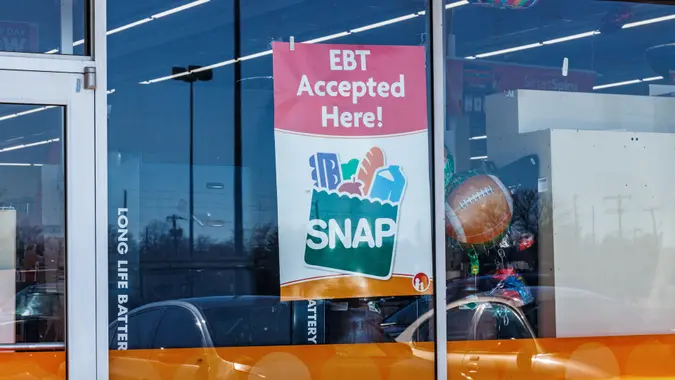Which Is the Best Budgeting Method for Retirees? A Financial Expert Weighs in

Commitment to Our Readers
GOBankingRates' editorial team is committed to bringing you unbiased reviews and information. We use data-driven methodologies to evaluate financial products and services - our reviews and ratings are not influenced by advertisers. You can read more about our editorial guidelines and our products and services review methodology.

20 Years
Helping You Live Richer

Reviewed
by Experts

Trusted by
Millions of Readers
Current or aspiring retirees hoping to get their finances on track may have encountered dozens of different budgeting methods available online. However, it can be challenging to know which techniques work best and how to use them effectively.
To help demystify the most popular approaches, Christopher L. Stroup, founder and president of Silicon Beach Financial, offered expert budgeting advice about each method.
Zero-Based Budgeting
Stroup explained that in zero-based budgeting, “each dollar is assigned a purpose to ensure that there is no waste.”
He noted that this strategy promotes intentional spending and helps retirees live within their means. Stroup said the method is “ideal for those with fixed incomes” and those who need “clear financial accountability.”
On the other hand, potential cons are that the strategy can be “time-intensive” and “cumbersome over time” since retirees have to track each expense. Stroup noted that it can be overwhelming for some and may become complicated for retirees with “unexpected expenses or irregular incomes.”
Envelope System
Another popular budgeting method is the envelope system. Stroup said the pros include its simplicity. He stated that dividing cash into envelopes can help “limit overspending by assigning a fixed amount to each category.” The approach can be highly effective for individuals who struggle with impulse spending and benefit from a visual of what money they must spend each month.
Stroup explained that “this system is useful for retirees with trouble managing discretionary spending” but cautioned that it “doesn’t work well for digital payments or larger, automated expenses like utilities; It’s less flexible for emergencies or unexpected costs, making it restrictive for those with a dynamic lifestyle.”
50/30/20 Rule
Influencers often cite the 50/30/20 rule as a solid budgeting method, but it may not be for everyone.
“It’s easy to understand and follow since you’re dividing income into needs (50%), wants (30%) and savings (20%),” Stroup said. “This method balances enjoying retirement and saving for the future.” He explained the method works best for “retirees with predictable income streams.”
“It may not address your unique retirement circumstances, such as healthcare costs or irregular income,” Stroup added. “The 50/30/20 breakdown may also feel rigid when certain spending categories fluctuate more than others.”
Pay Yourself First
Stroup noted that the pay yourself first method “prioritizes saving and investing, which is essential for securing financial stability in retirement. It encourages long-term wealth growth, especially when savings are automatic and consistent.”
Stroup cautioned however, that a con may be that “it may leave retirees with insufficient funds for daily needs if the initial savings amount is too high. There’s a risk of not budgeting enough for discretionary or unexpected expenses, especially without flexible implementation.”
More From GOBankingRates
- Nearly 1 in 3 Americans Hit by a Costly Holiday Scam, Norton Survey Shows -- How To Avoid This
- Here's What Retirees Wasted the Most Money On in 2025 -- and How To Avoid It in 2026
- How Middle-Class Earners Are Quietly Becoming Millionaires -- and How You Can, Too
- 6 Safe Accounts Proven to Grow Your Money Up to 13x Faster
 Written by
Written by  Edited by
Edited by 

























